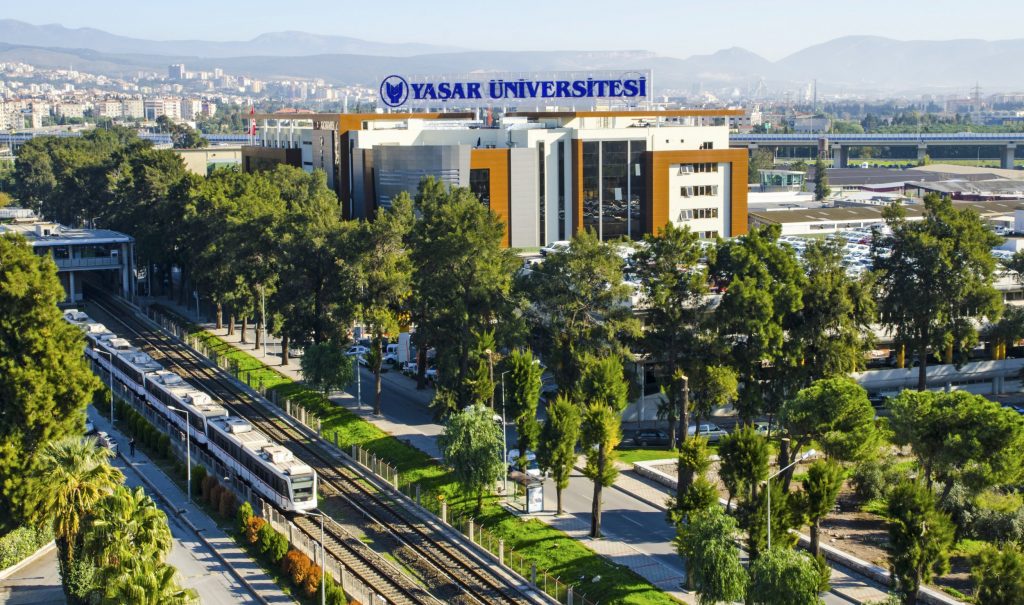Esta web utiliza cookies para que podamos ofrecerte la mejor experiencia de usuario posible. La información de las cookies se almacena en tu navegador y realiza funciones tales como reconocerte cuando vuelves a nuestra web o ayudar a nuestro equipo a comprender qué secciones de la web encuentras más interesantes y útiles.
Developing Intersectional Approaches to SDGs: Case of Migration
Description
Institution
Yasar University

Organizations/areas of the university involved
Yasar University, Izmir Migration Management Authority
Country
turkey
Link to learn more...
UNESCO Chair on International Migration established at Yasar University offers an intersectional approach by associating all its teaching and research activities with the SGDs. The case demonstrates how migration as a cross-cutting issue is researched at the university with reference to contributing SDGs especially by developing a wide range of national and international partnerships.
UNESCO Chair on International Migration established at Yasar University conducts all its teaching and research activities by associating them with SDGs. Intersectionality analyzes the role, function and impacts of power in producing inequalities. Intersectionality offers a powerful framework to understand and transform the underlying processes that define and shape inequalities of all kinds. With an aim to affect the interaction between selected power actors, the main target group of the initiative includes: 1) Young people (students and researchers) 2) Sector-related stakeholders such as migration governance institutions. As one of the examples, migration course is offered to the students of art and architecture who have no knowledge about migration since it is not a topic in their main curriculum. Students work not in the classroom but allowed to work in the readmission center in Izmir through the institutional partnerships established as part of innovative curriculum activities. Readmission center accommodates about 500-700 irregular migrants. Students determine different problems by working with migrant groups and develop SDG solutions. They present their solutions in project format to the migration authority. The crucial step was to build partnerships both between different faculties and also between the university and the migration authority. The next key step was to incorporate this initiative into the curriculum. It is currently being planned is to develop a new course for all students from all disciplines focusing on divergent cross-cutting issues beyond migration and working on SDG solutions through a multi-disciplinary and inter-sectional approach. The course is planned to be offered for SDG Academy.
Results and impact measured or expected
In the last 4 years, approximately 150 students have successfully taken the courses that were supported by outside campus, active field practice experience. The courses are also participated by international students from Spain, Italy, Netherlands, UK, Norway, Poland, Czechia, Malesia, Palestine, Pakistan, and UK. Additionally, 33 capacity building trainings were offered to policy practitioners and migration experts. At least 950 policy people have participated to these trainings. 11 seminar/panel/workshop have been directly organized and hosted by the Chair where all the research, education and training activities on migration were associated with challenges and solutions for SDGs. Number of participants were at least 435 people, majority of whom were from Turkey.
Connection with the SDG framework
The initiative contributes to provide students with the knowledge, skills, and motivation to understand and address the challenges of the SDGs. It also enhances for capacity building of students and professionals from different fields to work together, address challenges relating to the SDGs and propose research-based solutions. Through a broader inter-disciplinary and trans-disciplinary approach, rather than directly targeting specific SDGs, the initiative aims to foster an approach which will address several SDGs departing from specific cross-cutting issues. These issues constitute great challenges and exist globally with inevitable interaction with the SDGs however they are not presented as separate and explicit development goals. The initiative also contributes to Education for the SDGs by improving the cross-cutting skills and key competencies of young people and professionals that are relevant to addressing all of the SDGs. It promotes a cross-sectoral dialogue and action on SDG implementation with a focus on migration.
Barriers and follow up
The main barrier was to transform the traditional mindset of students and professionals and encourage them for such a new initiative of teaching and research. Second barrier was to overcome the already existing anti-migrant discourses and perspectives of young people that affects the motivation and progress of the partnership. SDGs and migration issues were taken as irrelevant topics for students’ higher education and their career objectives. For the professionals, students were not taken as serious stakeholder that can contribute to their problems with a direct link to SDGs. In response to overcome these challenges, the chair developed specifically developed contents on SDGs and also migration-development-integration debate. The teaching methodology is turned into team work rather than individual interventions. In 2021, architecture students worked in teams all semester (online due to COVID=19) with the students of University of Umea and they designed housing for all vulnerable groups including displaced people.
Transferability of the initiative
The initiative is certainly transferable in terms of its innovative content and methodology. Migration is a global issue, however the cross-sectional topic might be selected differently such as environment, gender or multi-culturalism. The initiative has all its inspiring steps of improvement in demonstrating how cross-sectional issues with an intersectional approach and accordingly established outside-campus activities/partnership can contribute to change of perceptions, skills development and provide research based solutions for policy actors concerning the SDGs related challenges.
Education 4 SDG funciona gracias a WordPress


